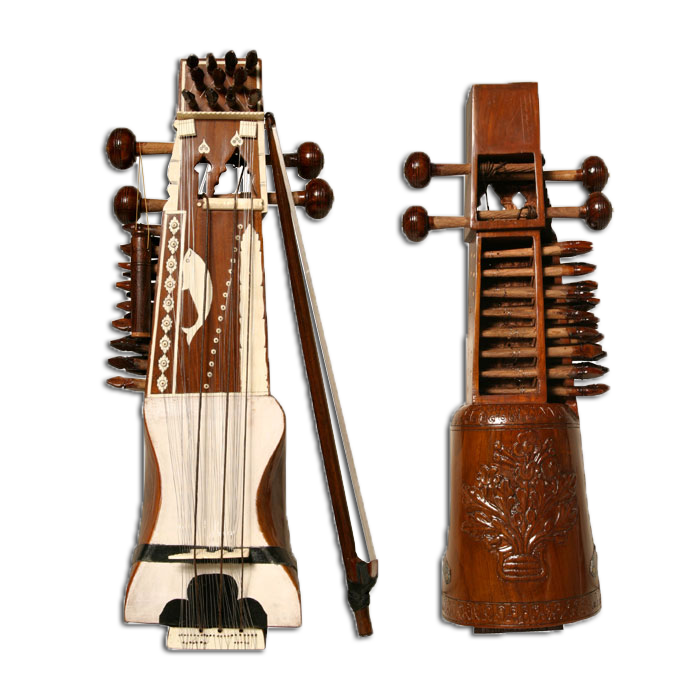Sarangi is a representative of vital class of musical instruments. It has three to four main playing strings and a number of sympathetic strings. The instrument has no frets or finger board. The strings float in the air. Voice pitch is controlled by sliding the fingernail against the string.
Sarangi has a box like shape with three hollow chambers (stomach-pet, chaati-chest, and magaj-brain) carved from a single block of turn wood. It is 2 feet and o.61 m long and around 6 inches wide.
Sarangi is extremely difficult to play, as a consequence its popularity is on decline. It is traditionally associated with the kathak dance and vocal style of thumri, dadra and kheyal. It was greatly associated with an Indian version of the geisha tradition known as the tawaif.
Sarangi is a bowed, short-necked string instrument from India which is used in Indian classical music. It has various meanings in Sanskrit. The word sarangi could be a combination of two Sanskrit word “Saar†and “Angâ€. Its name is widely believed to mean “a hundred colors†indicating its adaptability to a wide range of musical styles, its flexible tenability and its ability to produce a large palette of tonal color and emotional nuance. Sarangi remains not only the authentic and original Indian bowed stringed instrument but the one which expresses the very soul of Indian feeling and thought.
According to some musicians the word sarangi is a combination of two words “Seh†and “rangi†corrupted as sarangi. The term Seh-rangi represents the three melody strings. It is a vocal music. It is rare to find out a sarangi player who does not know the words of many classical compositions. The words are usually mentally present during performance. And the performance almost always adheres to the conversations of vocal performance including the organizational structure, the types of elaboration, the tempo, the relationship between sound and silence.
Sarangi players sing with their fingers and are still respected largely in Indian classical but drastically has lost its prestige largely as a result of social factors. The sarangi tradition is integral into vocal tradition and has sustained and nourished it. Contrary to the common belief the sarangi is and has historically been a solo as well as accompaniment instrument. Nowadays many respected sarangi players owe some or all of their livelihood to the teaching of vocal music.
Sarangi is also a traditional stringed musical instrument of Nepal. It is played by the Gaine or the Gandharba the ethnic group.

